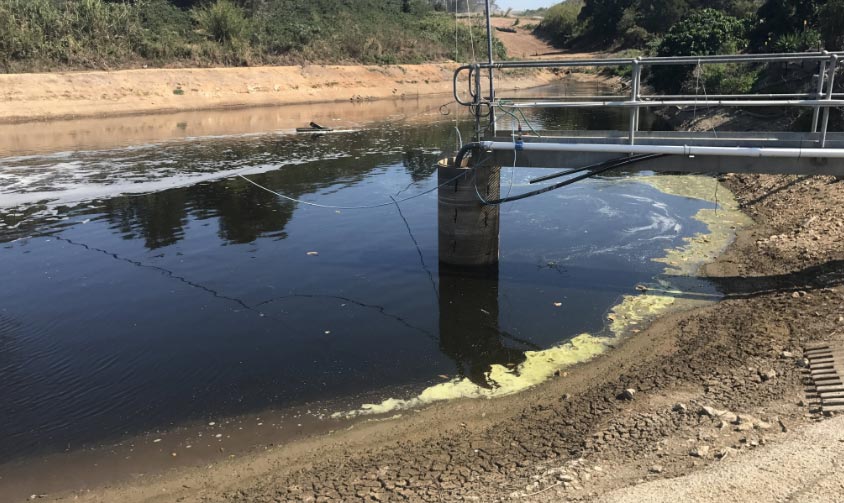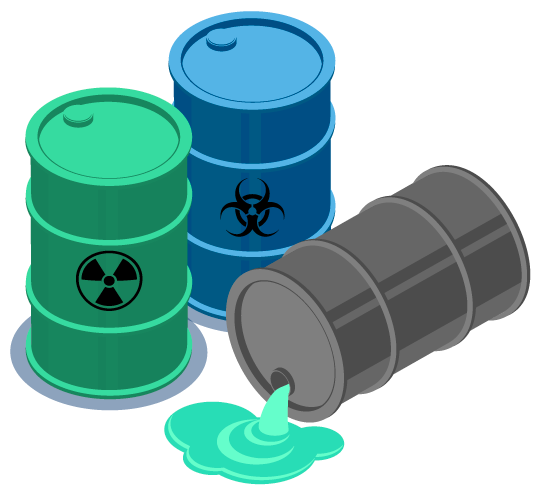Industrial Wastewater Treatment: Advanced Techniques for Effective Monitoring
Industrial Wastewater Treatment: Advanced Techniques for Effective Monitoring
Blog Article
Understanding the Comprehensive Process of Fluid Garbage Disposal: Ideal Practices and Environmental Impact Considerations
The management of fluid garbage disposal is a multifaceted concern that needs a comprehensive understanding of different finest methods and their connected environmental impacts. From the kinds of fluid waste produced to the methods employed for collection, therapy, and last disposal, each step plays an important duty in guarding communities and public health and wellness. As regulative standards advance and innovation advancements, the conversation around these processes comes to be significantly essential. What ramifications do these adjustments hold for future sustainability initiatives, and how can stakeholders ensure that they are effectively dealt with?
Types of Liquid Waste
Understanding the numerous sorts of liquid waste is necessary for efficient management and disposal methods. Fluid waste can be broadly classified into numerous kinds, each needing distinct handling and therapy methods.
Industrial liquid waste commonly contains unsafe materials, including heavy steels, solvents, and chemicals, produced during producing processes. These wastes necessitate strict governing compliance to secure human health and the environment. Domestic fluid waste primarily describes wastewater created from houses, including sewer and greywater, which, although much less poisonous, can still present significant threats if poorly managed.
Agricultural fluid waste, including overflow from farms, often includes fertilizers and pesticides that can result in environmental destruction if not dealt with adequately. Medical fluid waste, created from healthcare facilities, consists of infected liquids such as physical fluids and chemicals, needing specialized disposal methods to avoid infection and environmental contamination.
Finally, oil and oil waste, normally created by dining establishments and automotive sectors, can create serious obstructions in drain systems otherwise handled appropriately. Understanding these categories facilitates targeted strategies for treatment, compliance with guidelines, and efficient disposal techniques, eventually promoting environmental sustainability and public health safety.

Collection Techniques
Efficient collection methods are important for the proper monitoring of liquid waste, ensuring that it is collected safely and efficiently prior to treatment or disposal. Various techniques are utilized depending on the kind of liquid waste created, the volume, and the specific features of the waste.
One typical approach is using dedicated collection tanks or sumps, which are created to capture fluid waste at the source. These systems often integrate pumps that facilitate the transfer of waste to bigger storage containers or therapy centers. Additionally, mobile collection systems equipped with vacuum cleaner technology are utilized in circumstances where waste is generated periodically or in hard-to-reach places.
For commercial setups, closed-loop systems can successfully minimize spills and leaks, enabling the recuperation and reuse of fluid waste. It is also vital to train employees on correct collection procedures to mitigate risks linked with dangerous compounds.
In addition, carrying out regular maintenance routines for collection tools makes certain ideal efficiency and safety. The integration of advanced surveillance systems can enhance collection effectiveness by supplying real-time information on waste degrees and potential dangers. On the whole, reliable collection methods are fundamental to lasting fluid waste management practices.
Treatment Procedures
Therapy processes play an important function in the monitoring of fluid waste, changing potentially harmful products right into reusable resources or safe effluents - liquid waste disposal. These processes can be broadly categorized into additional reading physical, chemical, and biological approaches, each customized to attend to particular pollutants present in the waste stream
Physical treatment approaches, such as sedimentation and purification, work by getting rid of put on hold solids and particulate matter. These strategies are frequently the first step in the therapy chain, properly decreasing the load on succeeding processes. Chemical treatments include using reagents to neutralize unsafe compounds, speed up heavy metals, or oxidize natural toxins, consequently boosting the security of the effluent.
Biological treatment processes, including activated sludge systems and anaerobic digestion, maximize the all-natural capacities of microorganisms to break down raw material. These methods are specifically effective for wastewater containing biodegradable contaminants. Advanced therapy technologies, such as membrane layer filtering and progressed oxidation procedures, are increasingly utilized to attain greater degrees of filtration.
Incorporating a combination of these therapy techniques not just guarantees compliance with regulatory standards however likewise advertises ecological sustainability by recuperating important sources from liquid waste.
Disposal Options
Exactly how can companies ensure the secure and responsible disposal of liquid waste? Effective disposal options are important for safeguarding public health and the atmosphere. The main approaches consist of land incineration, therapy, and disposal adhered to by discharge right into municipal wastewater systems.
Land disposal includes the cautious containment of liquid waste in designated land fills, guaranteeing that it does not discover this info here leach into bordering soil or water. Incineration, on the other hand, subjects liquid waste to heats, converting it into ash and gases, which call for appropriate purification to lessen exhausts. This approach appropriates for contaminateds materials that can not be treated via traditional means.
In cases where fluid waste can be dealt with, organizations may go with chemical or organic treatment procedures to counteract unsafe elements before releasing the dealt with effluent into community systems. This route commonly aligns with regulatory needs, making sure that the effluent satisfies safety requirements.
Ultimately, companies need to conduct complete analyses of each disposal option to establish its viability, thinking about elements such as waste composition, regulative compliance, and prospective threats to wellness and the environment. By picking suitable disposal approaches, businesses can add to an accountable waste management approach.
Environmental Effect
The environmental effect of fluid waste disposal is an essential consideration for companies looking for to lessen their ecological footprint. In addition, the discharge of neglected or inadequately treated waste into surface area waters can result in eutrophication, leading to oxygen depletion and the subsequent death of fish and other organisms.

To mitigate these impacts, companies need to embrace best practices such as executing extensive waste treatment processes, advertising recycling and reuse, and adhering to regulative criteria. By taking a positive approach to liquid waste monitoring, entities can dramatically decrease their environmental impact while sustaining lasting advancement goals. Ultimately, an extensive understanding of the ecological influences connected with liquid garbage disposal is crucial for educated decision-making and accountable stewardship of natural sources.
Final Thought
Effective administration of fluid waste is essential for securing ecological integrity and public health. Eventually, a thorough understanding of fluid waste disposal not just reduces environmental effects yet also fosters a commitment to accountable source monitoring and ecological stewardship.
The monitoring of liquid waste disposal is a diverse problem that needs a thorough understanding of various finest methods and their connected ecological influences. From the types of fluid waste produced to the techniques used for collection, therapy, and final disposal, each action plays a critical role in safeguarding ecological communities and public wellness.The ecological influence of fluid waste disposal is an important factor to consider for companies looking for to lessen their environmental footprint. Eventually, an extensive understanding of the environmental impacts linked with liquid waste disposal is necessary for notified decision-making and accountable stewardship of natural sources.
Eventually, a detailed understanding of liquid waste disposal not only mitigates ecological impacts however likewise fosters a dedication to liable resource monitoring and ecological stewardship.
Report this page